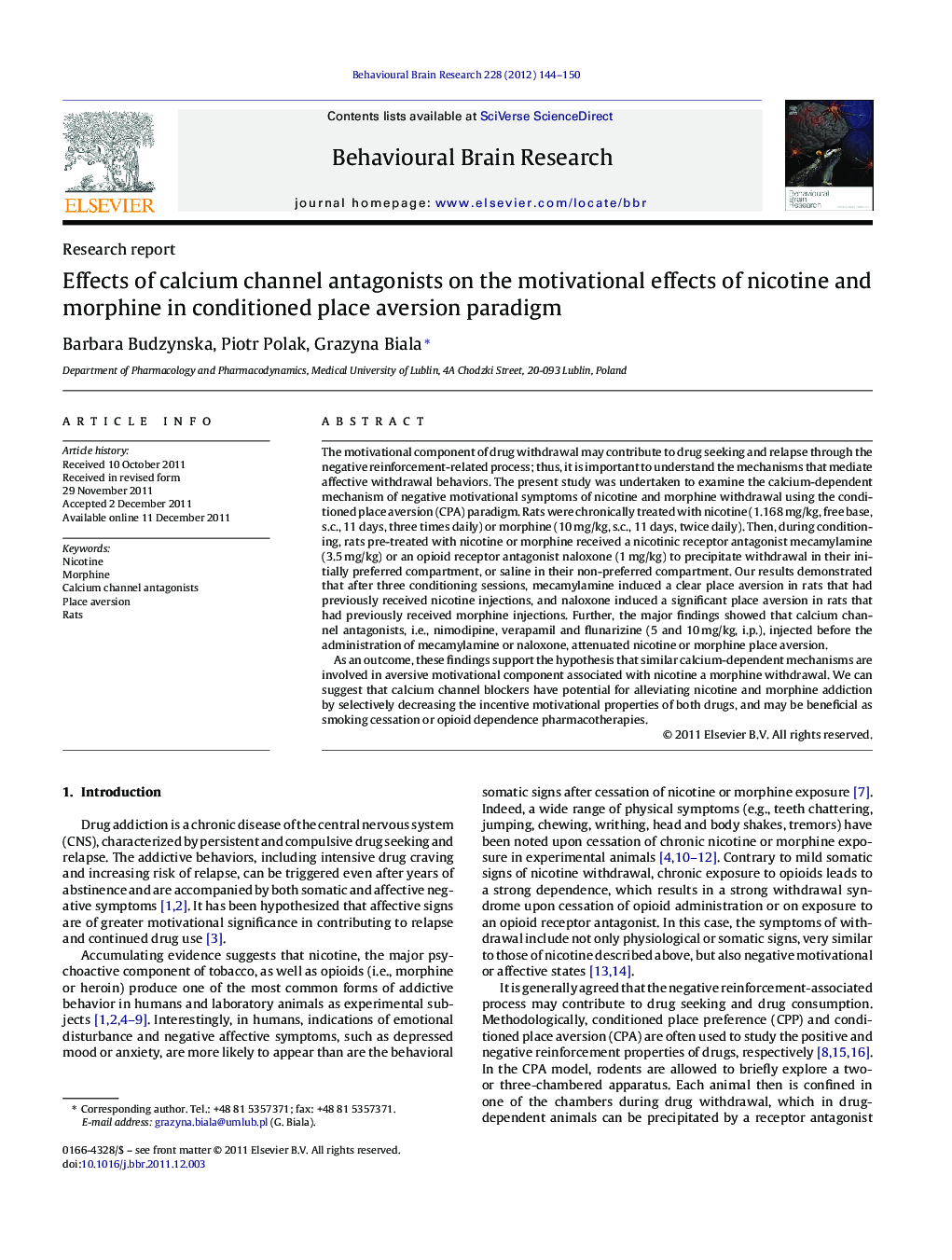| کد مقاله | کد نشریه | سال انتشار | مقاله انگلیسی | نسخه تمام متن |
|---|---|---|---|---|
| 4313551 | 1290000 | 2012 | 7 صفحه PDF | دانلود رایگان |

The motivational component of drug withdrawal may contribute to drug seeking and relapse through the negative reinforcement-related process; thus, it is important to understand the mechanisms that mediate affective withdrawal behaviors. The present study was undertaken to examine the calcium-dependent mechanism of negative motivational symptoms of nicotine and morphine withdrawal using the conditioned place aversion (CPA) paradigm. Rats were chronically treated with nicotine (1.168 mg/kg, free base, s.c., 11 days, three times daily) or morphine (10 mg/kg, s.c., 11 days, twice daily). Then, during conditioning, rats pre-treated with nicotine or morphine received a nicotinic receptor antagonist mecamylamine (3.5 mg/kg) or an opioid receptor antagonist naloxone (1 mg/kg) to precipitate withdrawal in their initially preferred compartment, or saline in their non-preferred compartment. Our results demonstrated that after three conditioning sessions, mecamylamine induced a clear place aversion in rats that had previously received nicotine injections, and naloxone induced a significant place aversion in rats that had previously received morphine injections. Further, the major findings showed that calcium channel antagonists, i.e., nimodipine, verapamil and flunarizine (5 and 10 mg/kg, i.p.), injected before the administration of mecamylamine or naloxone, attenuated nicotine or morphine place aversion.As an outcome, these findings support the hypothesis that similar calcium-dependent mechanisms are involved in aversive motivational component associated with nicotine a morphine withdrawal. We can suggest that calcium channel blockers have potential for alleviating nicotine and morphine addiction by selectively decreasing the incentive motivational properties of both drugs, and may be beneficial as smoking cessation or opioid dependence pharmacotherapies.
► We examined the mechanism of motivational signs of nicotine and morphine withdrawal.
► We used the conditioned place aversion (CPA) paradigm in rats.
► Mecamylamine or naloxone caused nicotine or morphine-induced place aversion.
► Calcium channel antagonists attenuated nicotine or morphine place aversion in rats.
► Calcium-dependent mechanisms are involved in motivational signs of drug withdrawal.
Journal: Behavioural Brain Research - Volume 228, Issue 1, 1 March 2012, Pages 144–150